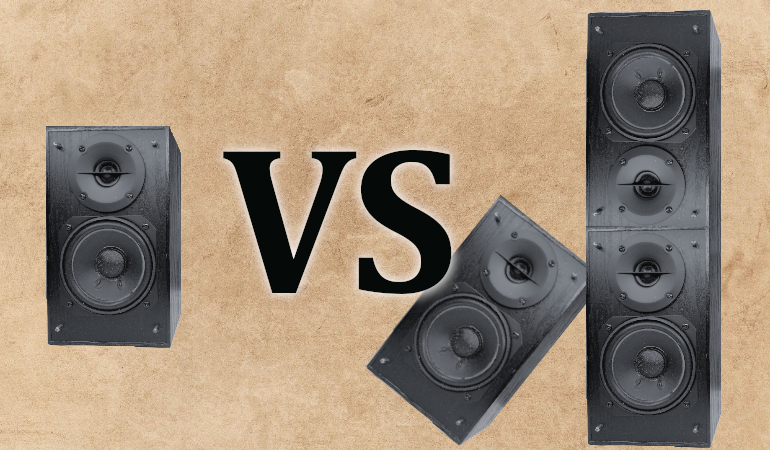Can I Use Two Speakers For More Volume?
When we first start our journey into home theater, we often are on a very strict budget. Home theater equipment can be quite expensive and we need time to save for some of the bigger purchases. We make do with what we have or what we can find for cheap. Sometimes we get lucky and can find some decent deals. Other times, we are stuck with woefully inadequate gear that we know isn’t right for our rooms. Surely there are some workarounds? Can we, for example, double up speakers that are too small so that we can get more volume out of them? If you can find a bunch of small, inexpensive speakers, maybe this is the stopgap measure you seek. Let’s discuss!
The Correct Answer
Before we go any further, the correct answer is no. You cannot use two speakers for a single channel of your system. So, no stacking two or three or four small speakers on top of each other for your front left, right, or center channel in hopes of getting extra volume. The reason is comb filtering.
Comb filtering is fairly easy to understand. Each speaker (let’s pretend they all have a single driver) creates a sound wave. If you have two speakers creating the same sound wave, the two sound waves start to cross. Where they cross, some of the sounds will get louder (yea! that’s what you were going for!). But some will be canceled out (boo! you didn’t want to lose sound!). There is really no easy way to know how the two (or three or four) speakers will interact to change the volume. In fact, as you move around the room, the effects of the waves interacting will be different. In home theater, different performance around your room isn’t good.
But Movie Theaters Do It!
If you glance around a movie theater, you’ll see many speakers on the walls. You’d find even more if you could see behind the acoustically transparent screen. Clearly, they are using multiple speakers to play the same content. If they can do it, why can’t you?

Obviously the size of the room plays a part. Those side speakers you are seeing? They are very far away from each other, not stacked. Comb filtering is less of an issue when speakers are placed far apart. Even if there were stacked speakers in that theater, those stacked speakers are designed to work together (just like the different drivers in your speakers). They aren’t just speakers stacked on top of each other to get more volume. Just like the speakers you see at concerts, there are real experts whose job it is to make those speakers work well together to get both volume and quality sound. You are not that person, your speakers are not those speakers, so the comparison is moot.
But, You Are Going to Do It Anyway, Aren’t You?
Okay, we all know this was a rhetorical question. You have the speakers, you aren’t looking for a reason not to stack them to get more volume. You are looking for HOW to do it. Since we are all about information around here, let us enable your terrible idea.
First things first, you need to wire them correctly. Check out our article here for more information. In short, if you have two speakers, wire them in series. If you have more than two, you’ll want to balance the impedance by wiring some speakers in parallel and some in series.
Lastly, you probably wonder what is the best way to stack them. Should you place the tweeters closest to each other? Maybe just stacked one on top of the other? Or maybe with the tweeters as far apart as possible? Could they be side-by-side? What’s the best?
None is the best, as you should know by now. But, if you are looking for what we suggest…well, we have no clue. There is no way of knowing how those speakers are going to interact with each other. You’ll need to wire them up and take a listen (we suggest sweeps). Listen from multiple seats. If you are hearing some sounds disappear or crescendo, then reconfigure your speaker stack. Pick the orientation that sounds the most even across the sweep for every seat in your theater. Good luck and let us know how it turns out in the comments!


